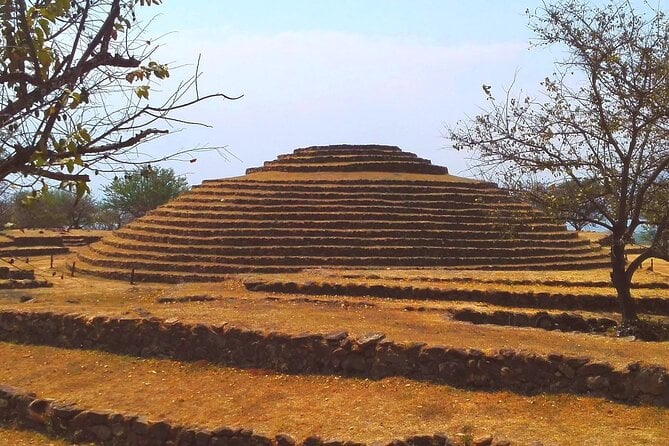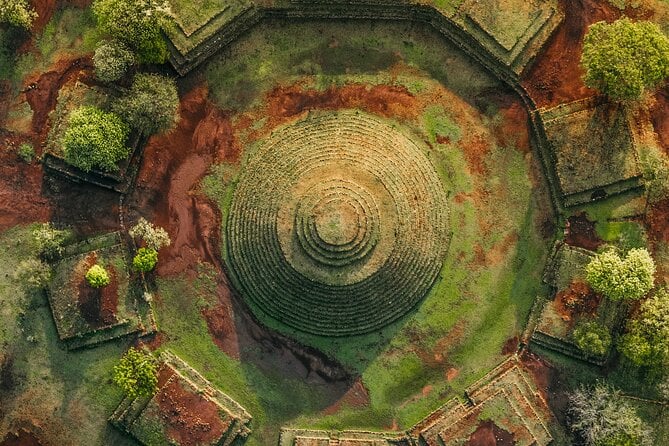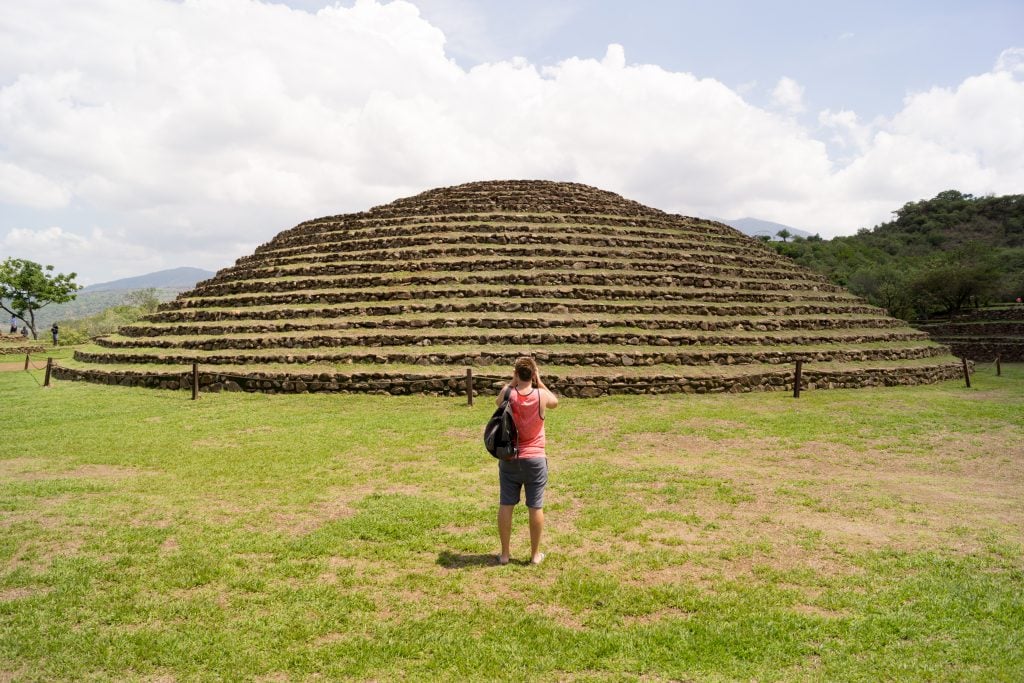The Guachimontones archaeological site, located near Teuchitlán in Jalisco, Mexico, stands as a striking example of Mesoamerican architecture. Attributed to the Teuchitlán culture, the site dates back to between 300 BC and 900 AD. It offers a remarkable window into pre-Hispanic civilization in western Mexico, showcasing architectural feats that continue to intrigue researchers and visitors alike.
Unique Architectural Features
One of the most distinctive aspects of Guachimontones is its circular pyramids. Unlike the more commonly seen stepped pyramids in other Mesoamerican sites, Guachimontones features pyramids with concentric rings of stepped terraces surrounding a central altar. These circular forms, some of which are up to 60 feet in diameter, were likely designed with both aesthetic and practical purposes in mind. The arrangement of the pyramids around an open space, along with several stone-lined plazas and smaller circular platforms, indicates a well-organized society. These structures may have supported various communal and ceremonial activities, further emphasizing the community’s complex social organization.

The “Great Guachi Pyramid”
The largest pyramid at the site, known as the “Great Guachi Pyramid”, is perhaps the most striking. This pyramid showcases not only advanced engineering techniques but also a deep connection to symbolic and cultural meanings. The structure’s circular form may have had cosmological significance for the Teuchitlán people, possibly representing the concept of cyclical time or eternity—a central theme in many Mesoamerican cultures. The placement of this pyramid within the site and its relationship to other structures suggest a level of sophisticated urban planning that integrated both architectural design and natural surroundings.

Cultural and Religious Significance
While the exact purpose of the circular pyramids remains a subject of scholarly debate, they are generally believed to have played an important role in the religious and social life of the Teuchitlán culture. Some theories suggest that the pyramids were centers for rituals and ceremonies, potentially linked to astronomical events, the worship of deities, or even agricultural cycles. The circular design may have been intended to represent ideas of eternity or a connection to celestial cycles, reflecting the culture’s deep understanding of both natural and cosmic phenomena.

Guachimontones: A Testament to Innovation
Guachimontones stands out not only for its aesthetic appeal but also for its architectural innovation. The site’s use of circular pyramids was not common in Mesoamerica, making it a unique architectural marvel. The skill and foresight required to build such structures, using advanced techniques for the time, highlight the Teuchitlán culture’s understanding of engineering and design. Additionally, the site’s location in the Tequila Valley of Jalisco was strategic, facilitating access to important trade networks and resources.

Legacy of the Teuchitlán Culture
Although much of the Teuchitlán culture remains shrouded in mystery, Guachimontones offers a glimpse into a society that valued both architectural complexity and cosmological beliefs. The site underscores the cultural richness and ingenuity of pre-Hispanic societies in western Mexico, providing key insights into a civilization that flourished long before Spanish influence.
Today, Guachimontones remains an enduring symbol of pre-Hispanic Mesoamerican architecture. Its historical significance and architectural brilliance make it an essential site in the study of ancient Mesoamerican civilizations. Researchers continue to explore the site’s mysteries, while tourists and scholars alike are drawn to its awe-inspiring design and cultural importance.
For further reading, additional resources like UNESCO and the Tequila Valley Archaeological Research Center provide more insights into the Guachimontones and the broader Teuchitlán culture.

